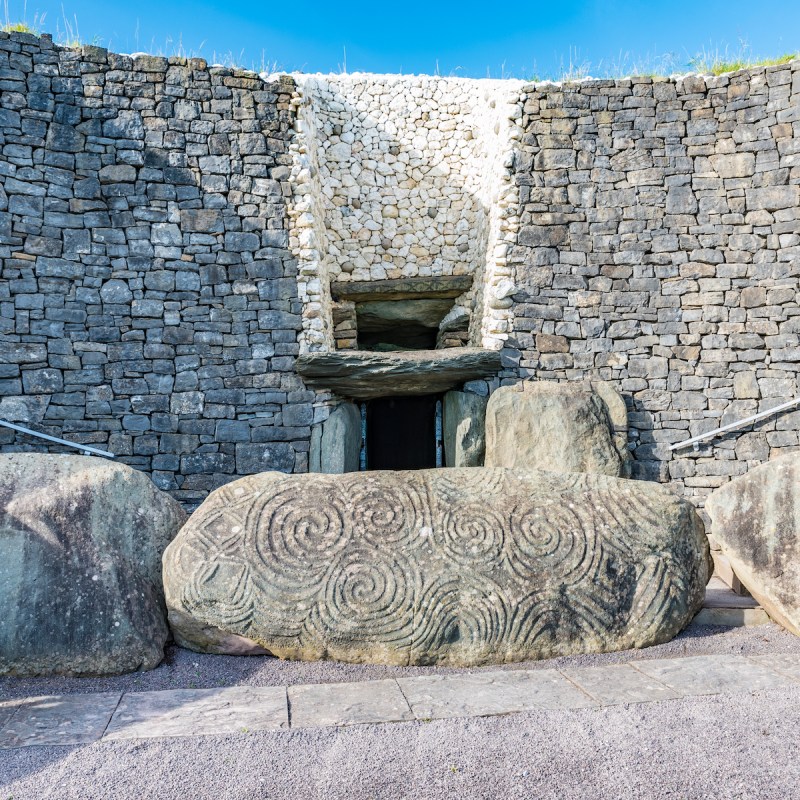
Let’s start this lineup of some of Europe’s nest archaeological sites with a look at what defines an archaeological site. One definition is simply, according to Science Direct: “Archaeological sites are locations where former human activity is manifested.”
Videos by TravelAwaits
So, basically any historic building or ruin could be classed as an archaeological site — and there are many of those in Europe. So here, I will steadfastly ignore many the amazing historical sites we have in Europe, from Rome and Pompeii, Italy to Athens, from Bath to the many Roman sites dotted around France. Instead, I will compile an interesting selection of sites of which a couple may be well known, but others will inspire you to search them out and learn more. From absolutely ancient prehistoric sights to slightly newer ones, there is something here for everyone.

1. Uffington White Horse Hill
Uffington, England
One of the most amazing sites in the area is the prehistoric chalk horse, one of England’s many gigantic chalk outlines, but the oldest of the lot. This abstract outline of a horse, 360 feet long and 130 feet wide, was carved out of the hillside, the trenches filled with white chalk rocks, contrasting nicely with the green grass. It dates to around 1,000 B.C. — ancient, yet very modern looking. The best view of the horse you’ll get from the Ridgeway Path, an 87-mile-long walking path along what is reportedly the oldest road in the world, passing by Uffington.
Pro Tip: Start with this one when coming from London, and on your way to Salisbury to see the henges, take in a few more chalk outlines within the county of Wiltshire. This must have been a favorite pastime, with plenty of horses and other outlines dotted throughout the countryside.

2. Lascaux Cave
Dordogne, France
The Lascaux Cave was found in 1940 by boys whose dog was interested in a “foxhole.” Upon examining the hole more closely, they found so much more: likely the most monumental discovery ever. Dating back to somewhere between 17,000 and 15,000 B.C., there are paintings on the cave’s wall that look as fresh as if they were painted yesterday. Showcasing sets of animals that were around at the time, such as horses, deer, bison, and many others, including some cats, the drawings are clearly done with skill, sophistication, and material that lasted through tens of millennia. While there exists a drone video of the original cave, the cave itself is far too precious and fragile to allow visitors in. Instead, you can see very good replicas in the visitor center by the original site.
Pro Tip: The Dordogne is riddled with troglodyte caves and dwellings hewn into the mountains, some natural, others enhanced. Base yourself at the charming Hotel Le Lascaux and explore the region from there.

3. Ggantija Temples
Gozo, Malta
Malta is a popular seaside destination. After all, you can’t beat an island in the Mediterranean. Add the capital city Valletta, and you’ll be forgiven to miss this gem on the neighboring island of Gozo. But in the calm and green landscape of the Xagħra plateau, there lie two 5,500-odd-year-old structures, the Ġgantija Temples. Snuggled into a hillside with a large stone wall surrounding them, the temples are not unlike a modern semi-detached house. There are two entrances, two separate rooms, and a shared wall between the two that seems to have once been painted.
The temples were reportedly used for sacrificial and ceremonial fertility rituals, and many small statues and figurines are displayed in the visitor center. It’s not the most exciting or significant archaeological site in Europe, but one most people pass by. A visit to Gozo is worthwhile when you find yourself in Malta, and this just adds that little something extra.
Pro Tip: The easiest way to see more of Gozo, including the temples, is either by renting a car in Valletta or nearby St Paul’s Bay or going on a day trip from Valletta. You’ll even get to go on a ferry between the two islands.

4. Maeshowe
Orkney Islands, Scotland
Off the northernmost tip of Scotland lie the Orkney Islands, and despite their remoteness, some several thousands of years ago, these islands were a hive of Neolithic activity. Listed as a UNESCO Site of Outstanding Universal Value, the islands hold many archaeological sites that are worth seeing including stone circles, old settlements, and burial grounds, all dating between the Neolithic period and the Bronze Age.
But I love the Maeshowe Chambered Cairn, a man-made memorial, reportedly one of the finest examples of a Neolithic building in Europe. You enter the mound that rises from a flat field through a door not unlike those of the pyramids in Giza, a small passageway lined with large stones so low that you have to duck. Then you enter the chambers, neatly done, and an astounding 5,000 years old. Move over, pyramids.
Pro Tip: Between the end of November and roughly mid-January, the setting sun aligns with the central chamber of the cairn, making it a rather special and unique experience. Book in advance to be able to see it.

5. Newgrange, Knowth, And Dowth
Meath, Ireland
In the county of Meath, just northwest of Dublin, lie three sites that already stood for 3,000 years before the pyramids were built. Accessible only from the Brú na Bóinne Visitors Centre and by guided tour are Newgrange and Knowth, two enormous Stone Age mounds that are older than Stonehenge and are listed as UNESCO World Heritage sites. The circular mounds with narrow passages into the central chambers are not unlike Maeshowe (see above), just on a larger scale. There is a third mound, Dowth, but you cannot enter this one.
Newgrange is undoubtedly the most interesting of the three. Similar to Maeshowe, there is a spectacle to be seen during the winter solstice. Between December 19 and 23 in Newgrange, the sunlight enters the passageway through a small opening at dawn and lights up the interior chamber.
Pro Tip: Only 2 years ago, a drone flight discovered a henge, or stone circle, in Newgrange. Archaeologists are in process of uncovering this.

6. Sutton Hoo
Woodbridge, England
If you saw the film The Dig (2021), then you will understand some of the background of this important archaeological find. If you haven’t seen it, do it now. It’s on Netflix, and even apart from the historic input, it is a good film.
Basically, in Sutton Hoo, in the east of England, two medieval burial sites were unearthed in the late 1930s, uncovering an enormous ship, some 89 feet long, which was the burial vessel for what is believed to have been a king, though the identity of the owner of this impressive grave is still unknown. It was filled with wonderful trinkets, ranging from a now famous full face and embellished helmet, jewelry, gold buckles, embroidered cloth, vessels, and other treasures.
But no body! It all dates back to the 6th or 7th century and was found, as so many archaeological treasures, by chance in someone’s field. Luckily, the owner was interested in literally digging deeper, and the rest is not only history, but also film history.
Pro Tip: While there is the dig site, a visitor center, and an exhibition at Sutton Hoo, most of the treasures were donated to the British Museum in London, so, for a well-rounded overview, you will need to visit both sites. But it is worth it.

7. Stonehenge And Avebury
Salisbury, England
You cannot possibly mention European archaeology and not include the neighboring, very different, and absolutely fascinating Neolithic stones of Stonehenge and Avebury. Stonehenge, for one, is so famous that I really very much wanted to dislike it, hoping the hype was exaggerated. But, alas, it is not.
Arriving at the monument first thing in the morning, without any crowds, and seeing the winter sunrise on the horizon, I was spellbound, and I recommend visiting to anybody. Not that I am one for frolicking around the stones at summer solstice, but I felt something. Probably the presence of very old history.
Next door is Avebury and its stones strewn around a field; it’s much less organized but no less fascinating. Not to forget Woodhenge, also nearby, making for three for the price of one, and very much worth searching out even if you are a cynic.
Pro Tip: Base yourself in lovely Salisbury, with its ancient cathedral holding a copy of the Magna Carta dating to 1215.
